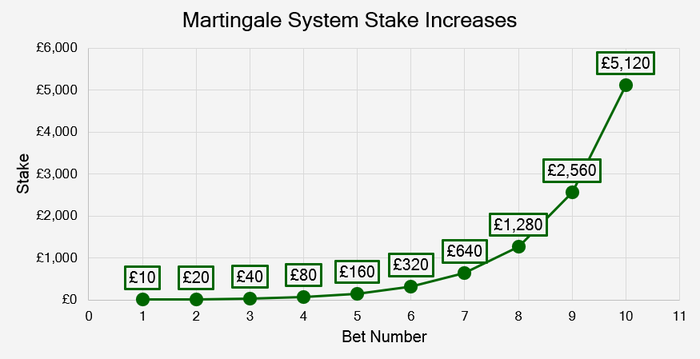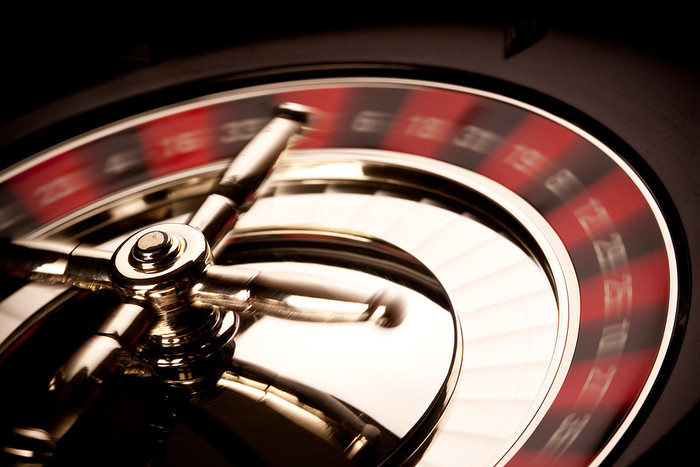 Betting systems are one of the most searched terms on Google in the gambling industry. Everyman and their dog are looking for that easy way to continually bash the bookies with a tried and tested betting strategy. But, does it actually exist and if so, what is it?
Betting systems are one of the most searched terms on Google in the gambling industry. Everyman and their dog are looking for that easy way to continually bash the bookies with a tried and tested betting strategy. But, does it actually exist and if so, what is it?
Well, the short answer to the question is no, a foolproof winning betting system doesn’t exist.
There is no strategy out there that will show results over a sustained period of time; we are talking years here, not months. Short-term success may be had from all of the strategies below that we are going to outline, but eventually they will all fail, as they are all flawed.
These types of strategies are often highly used for casino games and whilst we are talking about sports betting in general, we can take a leaf out of the casino book to start with. So, with casino games the probability of every possible outcome has been worked out in pretty much every game. All games are chance in a casino and they have been designed in a way that they can’t be beaten long term. Key point here…. Long term!
If we know every possible result for casino games and still cant get a long term winning system, then how on earth are you going to do it with sports betting on something that is almost completely random? You can never know 100% what is going to happen in a sport event, so applying a system to it is impossible. But, we are going to run through three of the ‘most popular’ betting systems and explain, nicely, why they are rubbish.
Martingale System

The Martingale is one of the most popular that is kicking about at the minute and this has been handed down from the online casino world. The concept is simple in that all you need to do is keep doubling your bet on even money shots until you win. This could work on sports or markets where only two outcomes are possible and one is an even money shot.
For example, tennis matches only have two possible outcomes for the outright winner as games cannot be tied. So you would then bet on your player at even money and if it lost, find the next match and double your original stake. This process continues until you finally back a winner..
Why the System Fails
This falls down for two reasons. The first is that bookmakers will have betting limits for all sports. Depending on the sport and the popularity of the market that you want to bet on, this amount will vary for each bookmaker. But, they will all have a limit as the wont want their exposure to be too high for any one single bet.
The second is that you are going to need an incredibly large bankroll to sustain the inevitable swings that are going to come your way. For example, if you placed your first bet of just £10 and then went on to lose 5 bets in a row, your 6th bet would need to be £320 for one single bet. At this point you’d be making a £320 bet to win your original £10 stake. Madness!

Labouchere System

The Labouchere system is one that has the slightest bit more merit to it than the Martingale, but its still pretty ropey to say the least.
The concept of the system is that first you need to choose how much you are looking to win from in total. You then take this amount and split it up into 10 different units. The units can be crossed off as you work your way through the bet, with your total stake then increasing as you lose a bet until you make that money back.
Let’s run through a quick example as we’re sure you’re as confused as we were when we first read about it.
Assume that you want to win £100 in total from your string of bets. This means that we need to split this into 10 equal stakes of £10 to get started.
Note: We are wagering on even money shots here by the way, such as red/black or odds/evens in roulette.
The layout might look like this 1111111111, with each ‘1’ representing a unit, in this case, £10.
For each bet we are going to take the far left and the far right number, combine them and this will determine our stake. So, the first bet we would add 1 + 1 to make 2 units and this would be our first bet. If our bet wins, you cross off 1 on the left and the 1 off the right, leaving eight 1’s. The idea is that by the time you cross off all 1’s, you will have made the original amount you set out to win.
| Bet Number | Numbers | Stake Unit | Stake | Win/Loss | Returns |
|---|---|---|---|---|---|
| 1 | 1-1-1-1-1-1-1-1-1-1 | 2 (1+1) | £20 | Win | £40 |
| 2 | 1-1-1-1-1-1-1-1 | 2 (1+1) | £20 | Win | £40 |
| 3 | 1-1-1-1-1-1 | 2 (1+1) | £20 | Win | £40 |
| 4 | 1-1-1-1 | 2 (1+1) | £20 | Win | £40 |
| 5 | 1–1 | 2 (1+1) | £20 | Win | £40 |
| Total | Stake £100, Returns £200 = £100 net win | ||||
But, let’s say that after our first bet wins our second bet loses. If this happens, we add the total number of units staked, in this case 2 and add that number to the end of the line, which would then look like 111111112.
The third bet would then be 1+2, making 3 units. If this loses again we add on a 3 to the end to make 1111111123. The fourth bet would then be 1+3, equalling 4 units and so on.
| Bet Number | Series | Stake Unit | Stake | Win/Loss | Returns |
|---|---|---|---|---|---|
| 1 | 1-1-1-1-1-1-1-1-1-1 | 2 (1+1) | £20 | Win | £40 |
| 2 | 1-1-1-1-1-1-1-1 | 2 (1+1) | £20 | Loss | £0 |
| 3 | 1-1-1-1-1-1-1-1-2 | 3 (1+2) | £30 | Loss | £0 |
| 4 | 1-1-1-1-1-1-1-1-2-3 | 4 (1+3) | £40 | Loss | £0 |
| 5 | 1-1-1-1-1-1-1-1-2-3-4 | 5 (1+4) | £50 | Loss | £0 |
| Total | Stake £160, Returns £40 = £120 Loss | ||||
Why the System Fails
![]()
Like the Martingale, this strategy won’t take many bets before you start to have to increase your stake quite dramatically. A couple of losers in a row would soon start to add up and on top of that it could take an age before you eventually tick of the all the ones and have enough winners to be earn the original winnings.
The Kelly Criterion

Without sounding too much like an X-Factor contestant, the Kelly Criterion actually has some merit to it, much more so than the two above. The concept of this betting strategy is that it determines how much you should stake for each bet that you make. But, it has one glaring flaw, of which we will get to you.
The process is that you should be able to select exactly how much of your bankroll to wager on each bet depending on the chance that you give that specific bet. So, if you need to work out how often that bet would come in and then add that into your equation.
The formula would be set out as Bankroll% = (Probability*Odds) – 1 / odds -1.
Let’s say that we want to back Leicester to win against Burnley at the weekend and are priced at 1.50 to do so. We think they have about a 65% chance of winning the match, so we input the numbers.
Bankroll % = (0.65*1.50) – 1 / 1.50 -1 = -5%
As you see here, we actually get a negative number as out percentage and this is where the strategy suggest that you avoid any matches as a negative number. OK, so, let’s doctor the bet somewhat and say that Leicester are priced at 1.70 to win.
Bankroll% = (0.65 *1.70) – 1 / 1.70 -1 = 15.00%
A slight increase in price is now suggesting that we should wager 15% our total bankroll on bet, given the probability that we have inputted.
Why the System Fails

OK, have you spotted the flaw in the system? Well, if you spotted that the probability of the bet being successful is worked out by your good self, then you would have spotted the flaw. The bet is going to be subjective and whilst you may think they have 65% chance another bettor may think they have nearer a 50% chance of winning. Users of this system would then get different suggestions for the same bet, having next to no consistency as betting system.
As a betting system, it’s pretty much totally flawed for that reason. But if you simply use it as a guide or even a bankroll management strategy, then this method does actually have some merit to it.
